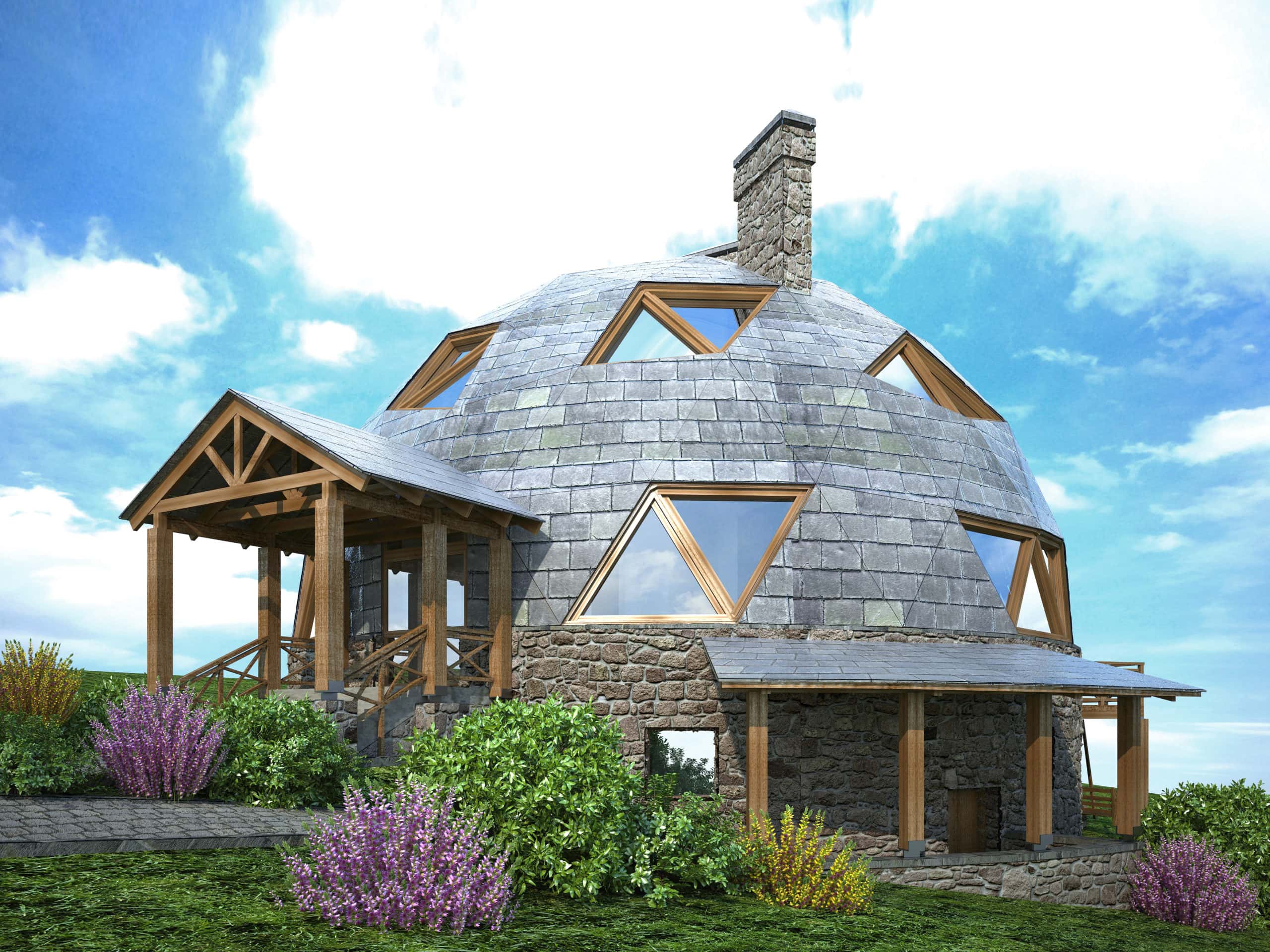Most residential domed structures here in the United States are one of two types: geodesic or monolithic. While both make for excellent dwelling spaces, each is constructed quite differently.
A geodesic dome is essentially made up of triangular panels that interlock together to create a dome shape, while a monolithic style dome is cast in a one-piece form. Both are strong, resilient structures. However, if you have a geodesic dome home, you do need to be aware of the potential for weakening. If a panel is damaged or comes out of place during a lift, the structure loses its stability. When planning your lift, you’ll want to make sure all parties involved are aware of this weakness and can work around and through it accordingly.
1. Don’t Overcomplicate Your Lift
Domed homes, whether geodesic or monolithic, are very easily raised. Just like with traditionally more angular homes, a domed home can be lifted with little or no damage. In fact, rounded homes are typically incredibly structurally sound, which means they stand a good chance of coming out of a lift without a scratch.
Your lifting contractor will use the same principles as with their other lifts to ensure your home is safely raised and kept intact. Generally, this means utilizing hydraulic jacks to lift your home inch by inch, then installing cribbing under your foundation. At that point, the house-jacking and cribbing process continues until your home reaches its desired height.
Hiring a professional and experienced lifter makes all the difference when you’re looking to raise your rounded home. Finding a lifting contractor who has worked with domed homes before can help put your mind at ease if you’re worried about severe damage occurring during the process.
2. Hire a General Contractor Who Has Experience with Domed Houses
Hiring a general contractor is an important step when thinking through lifting your home. Working with a contractor who has experience with these types of homes is a wise choice if it’s an option for you. In addition to preparing your home for a lift, there might be incidental damage that occurs after your home has been raised.
If this happens, it’s not because your lifting contractor is subpar. Simply put, when you lift thousands of pounds of house off the ground, there’s risk for minor cracking and damage. If this occurs, your general contractor can make the necessary repairs. But domed homes are built much differently than homes with angular walls and ceilings. Hiring a contractor who has experience with rounded homes is going to yield the best—and most financially beneficial—results.
3. Research Building Codes
Because dome or rounded homes are quite unusual, you’ll want to do thorough research on the building codes that govern your property. Homes built in this style may or may not have additional or more strict codes placed on them. Even though you aren’t building from the ground up, a lift is a serious construction undertaking, and you want to ensure that you and the entire team are operating legally. If you are confused about this step, your contractor should be able to get you started on the right foot.
4. Take Safety Precautions
As with other home lifts—or any home project—, safety should be your top priority. Always be sure that your electric, sewer, gas, etc., are disconnected. This can be done by your general contractor if you’re unsure of how to do these things properly.
5. Plan to Be Displaced
Are you trying to give your home extra protection from flood waters? Do you want to add a basement? Whatever the reason you’re lifting your rounded home, realize this: you will be out of your home for the duration of the project. Your contractors will work with you to give you an idea of how long you’ll be out of your home. But we suggest preparing to stay displaced longer than the estimated completion time, simply because you never know what might happen during a project of this scope.
6. Check for Cracks Post Lift
As stated earlier, domed houses are quite structurally strong, especially compared to their more angular and traditional counterparts. In fact, they are the only manmade structure that gets stronger and more sound the bigger they get.
But that doesn’t mean they won’t incur any damage from a lift. After your home is settled, you want to meticulously check your floors and walls for cracks. Just because your house is strong, it doesn’t mean it’s impervious to damage. You can even go a step further and hire a home inspector for even greater assurance that all is well. If not, your general contractor can fix any damage that occurred.

